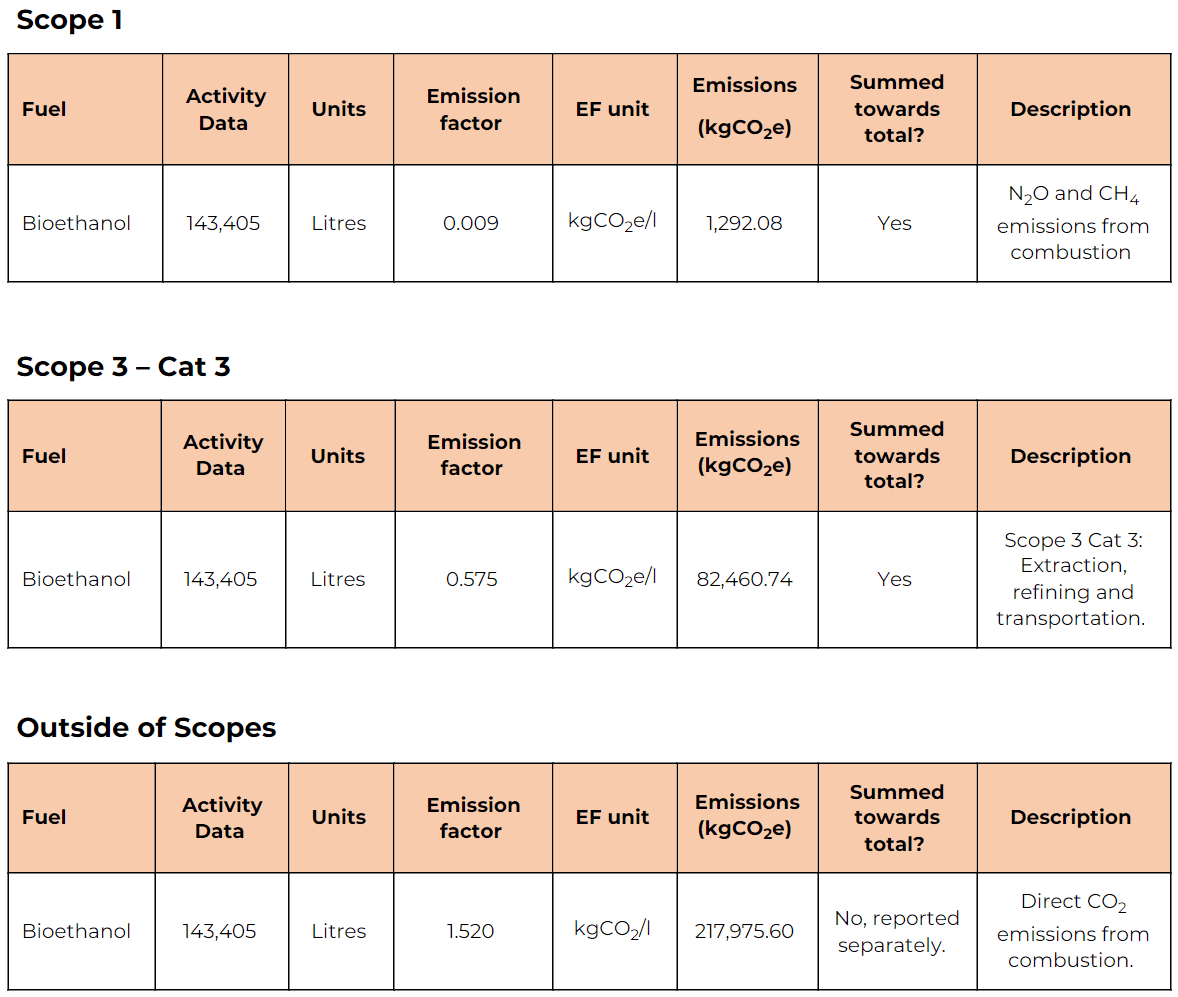
Calculating & Reporting Emissions From Biofuels
Many industries are using biofuels as an efficient route to emission reduction, particularly in transport & distribution, however calculating & reporting emissions from biofuels is no easy game... it's one of the more challenging Scope 3 emissions sources to manage!
In this blog, we're going to let you into some of the secrets of the trade, and guide you through the complex world of biofuel emission caclulation and reporting.
Note: This guidance was developed in December 2023, and is subject to change over time. To ensure that you're up to date, we'd recommend using this blog as a starting point, or getting in touch with a sustainability consultancy.
The Greenhouse Gas Protocol
As with any topic, a sensible starting point is the Greenhouse Gas (GHG) Protocol. As we write this blog, the GHG Protocol is currently in the process of developing it's 'Land Sector and Removals Guidance', which looks to provide further explanation on, amongst other topics, biogenic emissions, and emissions from the use of bioenergy, so keep an eye out for future blogs with these updates.
According to current GHG Protocol guidance, direct CO₂ emissions (note: this is CO₂ specifically, not CO₂e) from the combustion of biomass should not be included within Scope 1 but should be reported separately. This is because the CO₂ was originally stored by the cropfeed, and an equivalent amount can be sequestered by the next crop cycle. Therefore, it makes sense to report these emissions, but not include them in traditional scopes of calculation.
Beyond this, the GHG Protocol Scope 3 Standard states that 'any biogenic emissions arising in a Scope 3 category should be reported separately.
Department for Environment, Food & Rural Affairs
The Department for Environment, Food & Rural Affairs (Defra) offers further guidance in its GHG conversion factor dataset:
· CO₂ emissions are assumed to be ‘Net-zero’ in Scope 1 to account for CO₂ absorption by fast-growing bioenergy sources during their growth.
· N₂O and CH4 emissions are not absorbed during biomass growth and should therefore be included in Scope 1 for reporting. Defra offers emissions factors for the release of these gases during combustion in units of CO₂e for common biofuels, biomass, and biogas.
Although the Scope 1 conversion factors contain a ‘zero’ value for CO2 emissions, organisations must account for the impact of the CO₂ released through combustion of the fuel. These emissions are to be calculated in the same way as Scope 1 emissions but should be listed separately within reports under a section labelled ‘outside of Scopes’.
This section should not be aggregated with the organisation's emissions total but should displayed separately within the emissions report. Defra offers emission factors for CO₂ emissions for biogenic sources in its ‘outside of scope’ tab.
Although the carbon emissions embodied in the fuels can be considered 'net-zero' (as detailed above), the emissions arising from their processing and transportation are additional.
Therefore, Well to Tank (WTT) emissions from biogenic sources (for instance, emissions arising from the extraction, production, and transportation of the fuels) will be included in Scope 3 Category 3, as is the case for all other non-biogenic fuels.
So, we're left with three categories:
- Non-CO₂ Scope 1 Emissions
- Scope 3 Emissions
- CO₂ Scope 1 Emissions (To be reported seperately)
A Worked Example
Lets say Company A consumes 143,405 litres of bioethanol. As per the guidance set out by DEFRA and the GHG protocol the company calculate their Scope 1, Scope 3 category 3, and ‘outside of Scopes’ emissions from the consumption of bioethanol.
The total Scope 1 emissions, from N₂O and CH₄ released during combustion were 1,292.08 kgCO₂e. The Scope 3 category 3 emissions, from upstream processing of the bioethanol were 82,460.74 kgCO₂e. The total emissions considered ‘outside of scopes’, from CO₂ release during combustion were 217,975.60 kgCO₂e.
Company A reports the emissions from N₂O and CH₄ released within Scope 1, and the upstream emissions from fuel processing and distribution within Scope 3 category 3, as part of their greenhouse gas inventory.

What About Science-Based Targets?
If you're hoping to submit Science-Based Targets (SBTs) to the Science-Based Targets Initiative (SBTi), you'll want to be entirely confident that your calculations will live up to their expectations too (although even if you're not submitting SBTs, you should be aiming to be in line with their guidance to insure your calculation is as good as it can be)!
Even though emissions from CO₂ released in combustion of biofuels are reported separately (as per GHG protocol and DEFRA guidance), they must be included within the boundary of the relevant science-based target.
Furthermore, these emissions must be included in the target boundary when setting a science-based target (in Scopes 1, 2, and/or 3, as required) and when reporting progress against that target.
Beyond this, companies are expected to adhere to any additional GHG Protocol Guidance on bioenergy accounting when released to maintain compliance with SBTi requirements.
Conclusion
In summary, managing the intricacies of biofuel emissions reporting can be quite the endeavor - challenging, yet entirely achievable. It's important to balance adherence to the GHG Protocol and Defra guidelines, while accurately categorizing CO₂, N₂O, and CH₄ emissions. And for those aiming to meet Science-Based Targets, incorporating all biofuel emissions into your target framework is key.
If you find yourself navigating this complex terrain and in need of some assistance, feel free to get in touch!
0 Comments